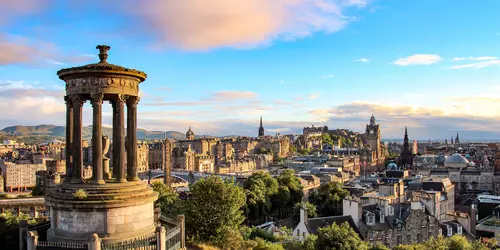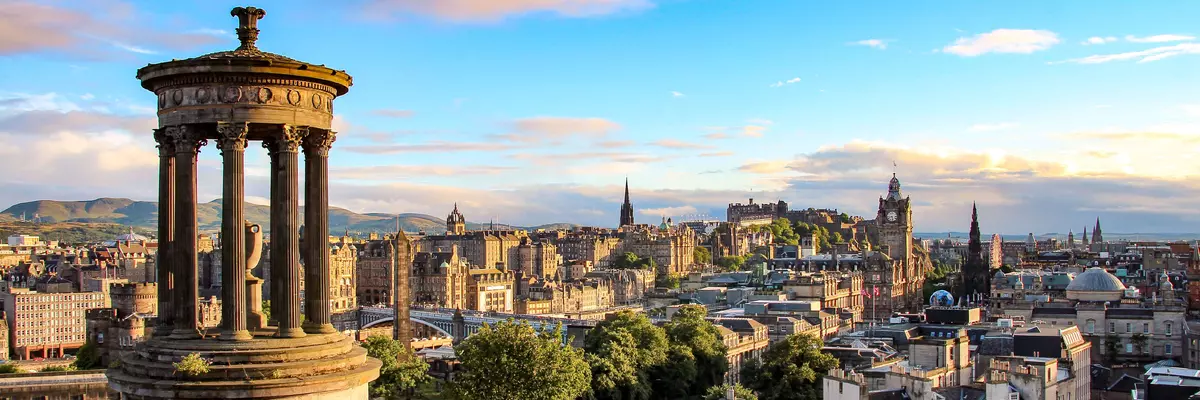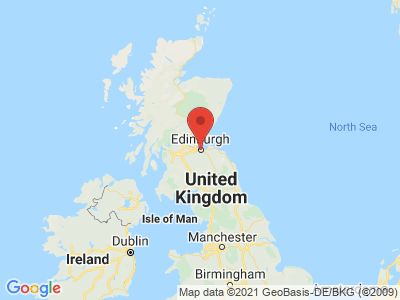Climate Table Edinburgh
Jan | Feb | Mar | Apr | May | Jun | Jul | Aug | Sep | Oct | Nov | Dec | |
|---|---|---|---|---|---|---|---|---|---|---|---|---|
| Max. Temperature | 6° | 6° | 8° | 11° | 14° | 17° | 18° | 18° | 16° | 12° | 9° | 7° |
| Min. Temperature | 1° | 1° | 2° | 4° | 6° | 9° | 11° | 11° | 9° | 7° | 4° | 2° |
| Sun Hours | 2 | 3 | 3 | 5 | 6 | 6 | 5 | 5 | 4 | 3 | 2 | 2 |
| Water Temperature | 8° | 8° | 8° | 9° | 10° | 12° | 15° | 17° | 17° | 15° | 12° | 10° |
| Rain Days | 17 | 15 | 15 | 14 | 14 | 15 | 17 | 16 | 16 | 17 | 17 | 18 |
The climate year of Edinburgh
Edinburgh is the capital of Scotland and is located on the east coast on the south side of the Fifth of Forth. This is an inlet formed by an ice age glacier. Today, the only reminder of the glacier is the landscape around Edinburgh and the River Forth. Since the city is located in the east of the country, the temperatures are much cooler than in the west, as Edinburgh no longer benefits from the warm Gulf Stream. Visitors to Edinburgh should be prepared for changeable weather, which is typical for the region. On the other hand, in the summer, guests can expect a gorgeous green hilly landscape with pleasant temperatures. Summer is also the best time to visit Edinburgh, but if you are looking for a room in this period, you should be quick, because in the months of July and August the city has the largest rush of visitors.
General information about Edinburgh
Edinburgh is a city where art and culture are held in high esteem, which is evident every year in the Edinburgh Festival. This is not just one festival, but several events from August to September. One of the highlights is the International Film Festival, which is the oldest regularly held film festival in the world. Mainly feature films and documentaries are presented, but also short films, dance films or animated films are shown. Edinburgh also has numerous art museums that present interesting exhibits. These include, for example, the National Gallery of Scotland, which houses works of art from the 14th to the 19th century. Not only the exhibitions in the museums are worth seeing, but also the buildings of the city itself. The most prominent point and visitor magnet is the city's clock tower, which is located near the North Bridge.
Tourism Edinburgh
Large temperature fluctuations are rare in Edinburgh and even in summer the thermometer rises, but it never gets hot. This makes the city in the summer a pleasant destination, but here is also increasingly to reckon with annoying mosquitoes, which feel very comfortable in the climate, especially if the winter has also turned out very mild. In the winter months it cools down considerably, but frost usually does not occur. Temperatures remain mostly in the plus range, only rarely falling just below freezing. Nevertheless, it can happen that it snows in Edinburgh during the winter months. However, this is usually short-lived and the snow rarely stays for more than one or two days.


